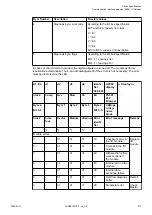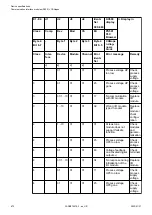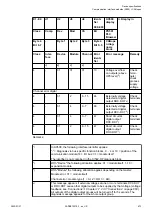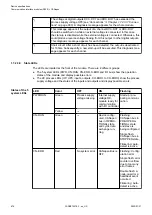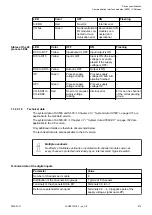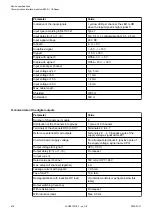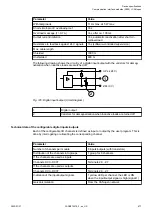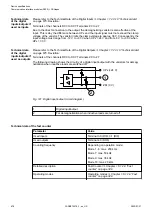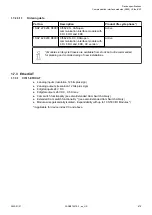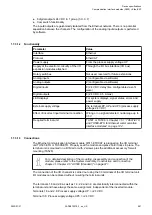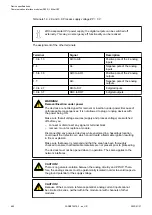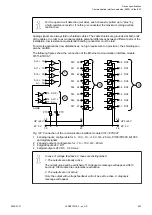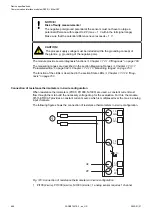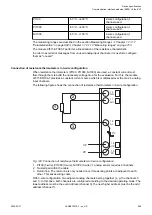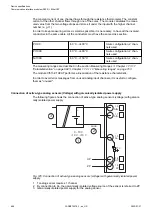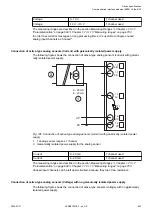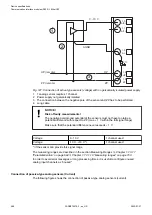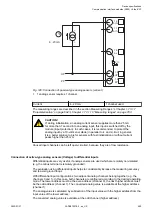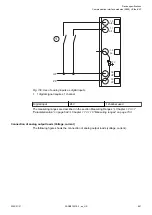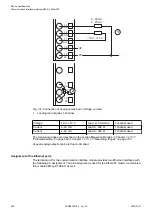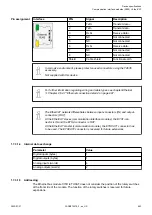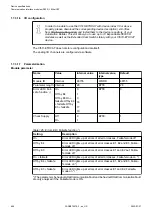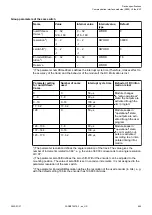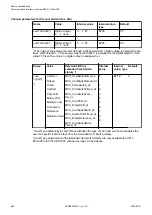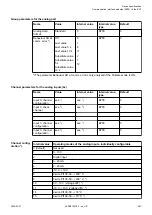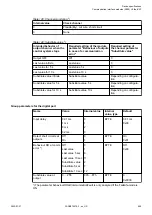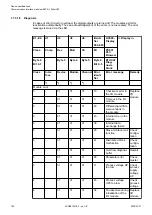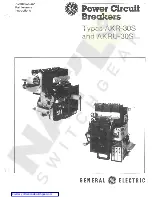
Pt100
-50 °C...+400 °C
2-wire configuration, 1
channel used
Pt1000
-50 °C...+400 °C
2-wire configuration, 1
channel used
Ni1000
-50 °C...+150 °C
2-wire configuration, 1
channel used
The measuring ranges are described in the section Measuring Ranges
“Parameterization” on page 694
Chapter 1.7.3.1.10 “Measuring ranges” on page 703
.
The module CI511-ETHCAT performs a linearization of the resistance characteristic.
In order to avoid error messages from unused analog input channels, it is useful to configure
them as "unused".
Connection of resistance thermometers in 3-wire configuration
When resistance thermometers (Pt100, Pt1000, Ni1000) are used, a constant current must
flow through them to build the necessary voltage drop for the evaluation. For this, the module
CI511-ETHCAT provides a constant current source which is multiplexed over the max. 4 analog
input channels.
The following figure shows the connection of resistance thermometers in 3-wire configuration.
1.0
1.1
1.8
1.9
AI0+
AI1+
UP
ZP
UP
ZP
PTC
1.5
AI–
2
3
1
Fig. 124: Connection of resistance thermometers in 3-wire configuration
1
Pt100 (3-wire), Pt1000 (3-wire), Ni1000 (3-wire); 1 analog sensor requires 2 channels
2
Twisted pair within the cable
3
Return line: The return line is only needed once if measuring points are adjacent to each
other. This saves wiring costs.
With 3-wire configuration, two adjacent analog channels belong together (e. g. the channels 0
and 1). In this case, both channels are configured according to the desired operating mode. The
lower address must be the even address (channel 0), the next higher address must be the odd
address (channel 1).
Device specifications
Communication interface modules (S500) > EtherCAT
2022/01/31
3ADR010278, 3, en_US
685

